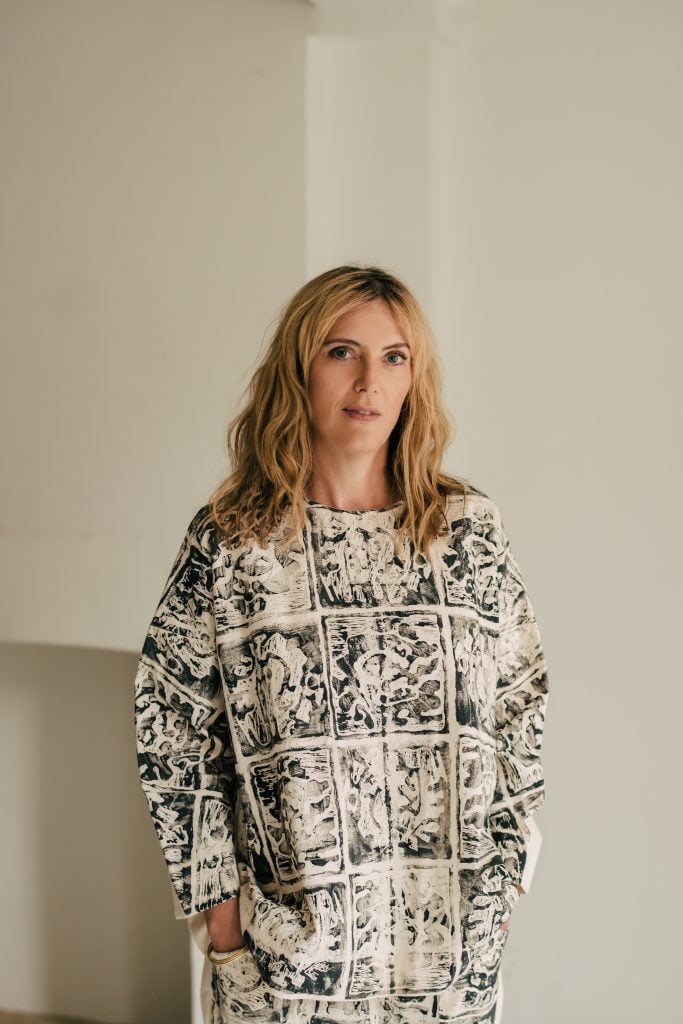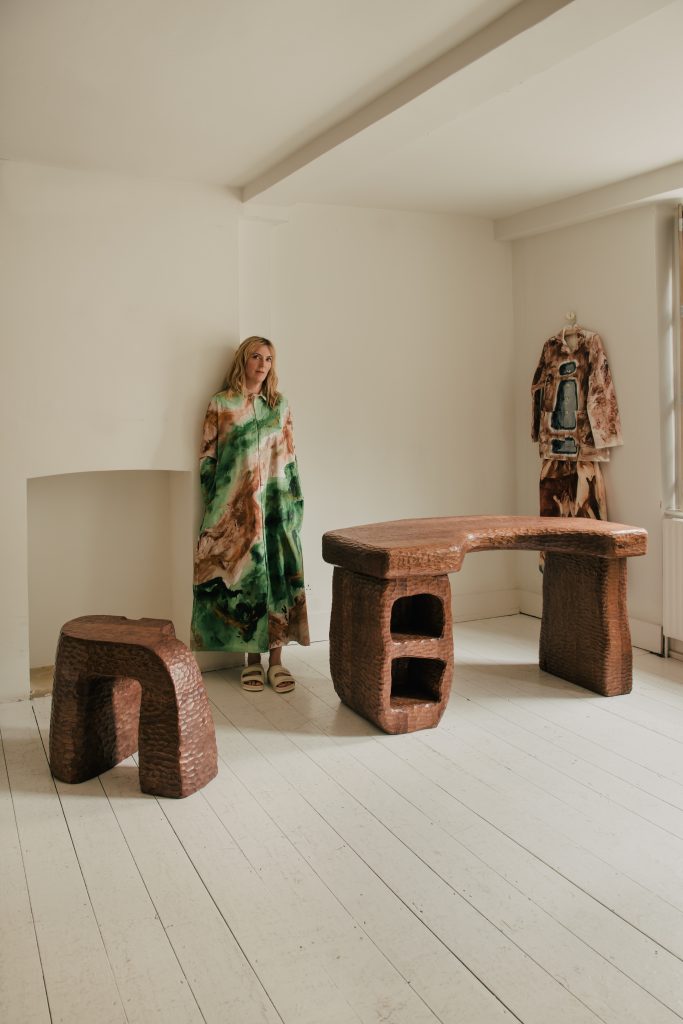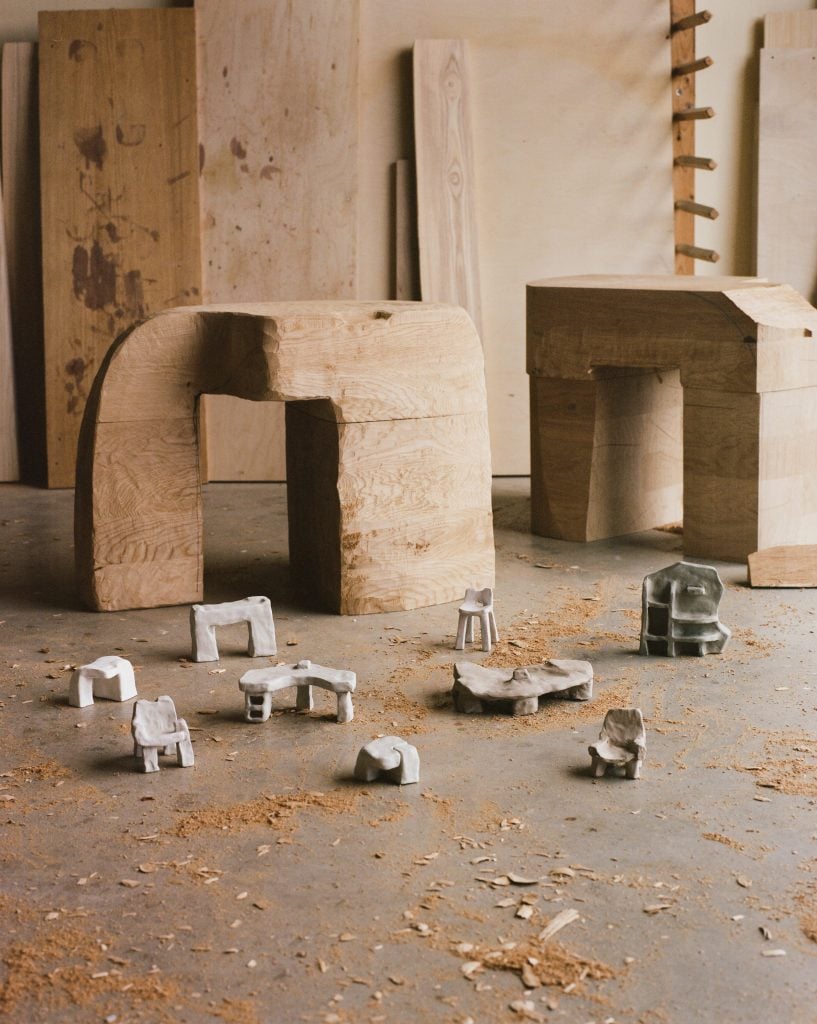Gallery Network
7 Questions for British Designer Faye Toogood on Her Signature ‘Assemblages’ and Finding What We Cannot See
The artist's current show "Assemblage 7: Lost and Found" is on view at Friedman Benda, Los Angeles.

The artist's current show "Assemblage 7: Lost and Found" is on view at Friedman Benda, Los Angeles.

Artnet Gallery Network

Based in London, Faye Toogood has pursued a diverse host of creative endeavors, ranging from clothes and furniture to installation and interior design. Within the context of her career, Toogood’s practice is delineated by her “Assemblages,” cohesive bodies of work that are tied together by form, material, theme, or a collection of ideas.
Toogood’s current solo exhibition at Friedman Benda, Los Angeles, “Assemblage 7: Lost and Found,” presents the artist’s most recent body of work, which largely draws inspiration from British history as well as notions of archaeological excavation—finding things that were once known and are now hidden. Employing materials native to England, the sculptural objects in the show are conceptually multilayered and physically indexical of the processes used to create them.
Earlier this year, Phaidon released the monograph, Faye Toogood: Drawing, Material, Sculpture, Landscape, which offers the first comprehensive look at her multidisciplinary work and practice. Recently, we spoke with Toogood about her current exhibition, her practice, and how she envisions her next collection.

Courtesy of Friedman Benda and Faye Toogood. Photo: Genevieve Lutkin.
The current exhibition features carved oak works with individual titles that tie back to the exhibition title, “Lost and Found,” such as Lode I (2021) and Cairn (2021). What was the inspiration behind these pieces? And how do the materials and titles dialogue with each other?
I felt like I was revealing something that had always been there—something almost prehistoric that had been lost to time, and it was my job to find it again. Chipping and chiseling away, it felt like an archaeological dig: the block was a landscape and I was finding my treasure within this block.
The materials are elemental, taken directly from the landscape. Rippled surfaces reveal the slow, skilled hand of the woodworker and the stonemason. The polished wood feels incredibly traditional and refined, but also primordial as if the objects have been dredged from the bottom of a peat bog. The Purbeck marble we have used is normally seen in ecclesiastical buildings, and when I look at the finished pieces, I see a kind of offering. Something spiritual. Perhaps this assemblage is the closest I have come to traditional sculpture.
How were these works physically made? Were they fully designed beforehand or was the process more organic?
The design process started with mini maquettes in clay which were then translated into 1:1 models in Styrofoam—these function as masters for the carver. Materiality was always taken into account, and the final models were carefully adjusted to reflect ideal material thicknesses in oak beams and Purbeck marble slabs. There was a daily exchange between the carver and my design team for the first pieces to establish textures, details, and finishes.

Courtesy of Friedman Benda and Faye Toogood. Photo: by Genevieve Lutkin.
What do you want viewers of this exhibition to take away with them? What do you want the experience of viewing your work to be?
A friend told me they thought that the pieces were romantic. I think there’s a lot of love in there: love, connection, relationships, intimacy. The landscape of the body, of bodies together. Aging. Growing together. With archaeological digs, people spend years of their life revealing parts of the landscape to discover what’s been loved and lost.
Can you tell us a bit about “Assemblages”? How did you come to this way of editioning bodies of work? Is there an end?
I think in groups of pieces, rarely singular. My background is in art history, and I have always felt more comfortable calling them assemblages as this allows me to think beyond the label of a traditional furniture collection. Some assemblages in themselves are still ongoing and growing in pieces. I don’t necessarily see an end; older ones might be archived or re-editioned.
Prior to “Assemblage 7: Lost and Found” was “Assemblage 6: Unlearning.” Can you give us some insight into what might be next? Is there anything you haven’t worked with either thematically or materially that you want to?
There are so many things I would like to work with, from jewelry to lighting, but always paired with sculptural furniture—this is key to my assemblage. I’m still designing new pieces within “Assemblage 7”: a group of pieces for a commission for Chatsworth House in 2023. The next collection will start forming probably once I feel a natural completion of the current one.
Your work on the whole traverses disciplines from sculpture to furniture to fashion. Do you approach these categories as distinctive, or do you see their boundaries as more malleable? Does your knowledge and experience in one field inform or inspire work in another?
I approach each realm in the same way, mainly intuitively. I love thinking in different materials and how this would change the end result. Sometimes one abstract idea is translated into a multitude of categories, and I enjoy playing with this.
If you could own any artwork in the world, what would it be and why?
It would probably have to be a Barbara Hepworth sculpture. I had the chance to visit the Norton Simon Museum while in L.A. and fell in love with her sculpture, Assembly of Sea Forms, a group of sculpted white marble pieces mounted on a stainless-steel base. I would have this one.
“Faye Toogood | Assemblage 7: Lost and Found” is on view at Friedman Benda, Los Angeles, through November 12, 2022.